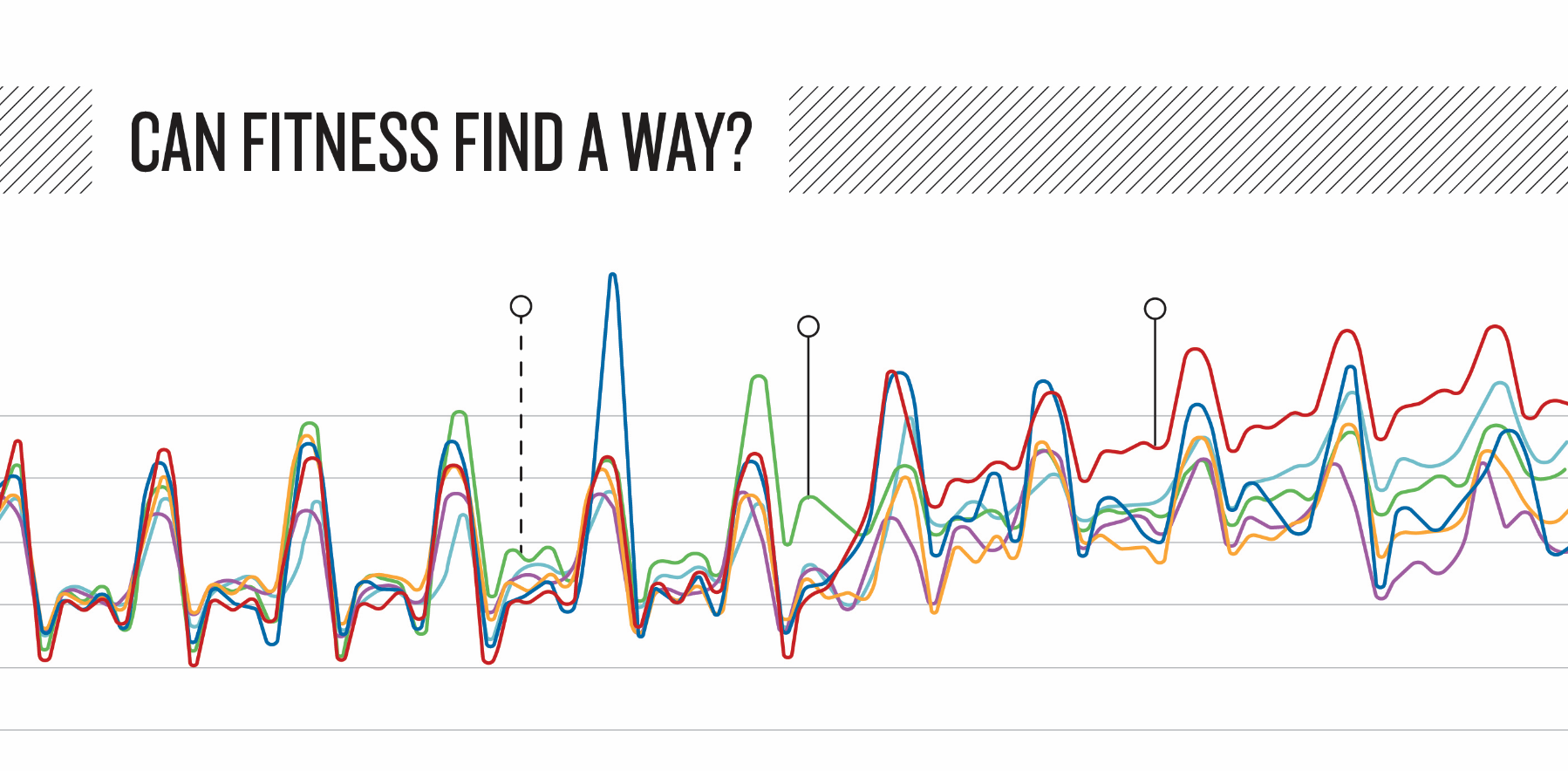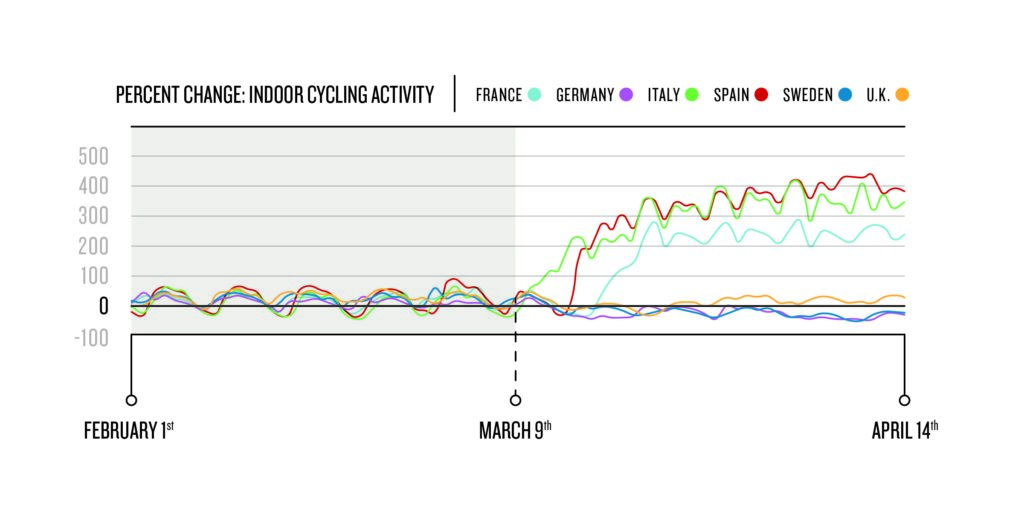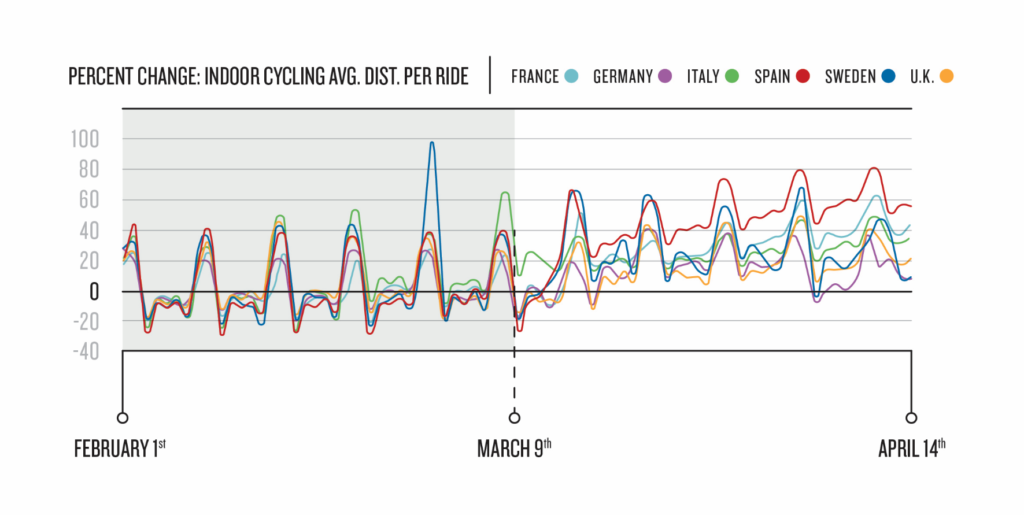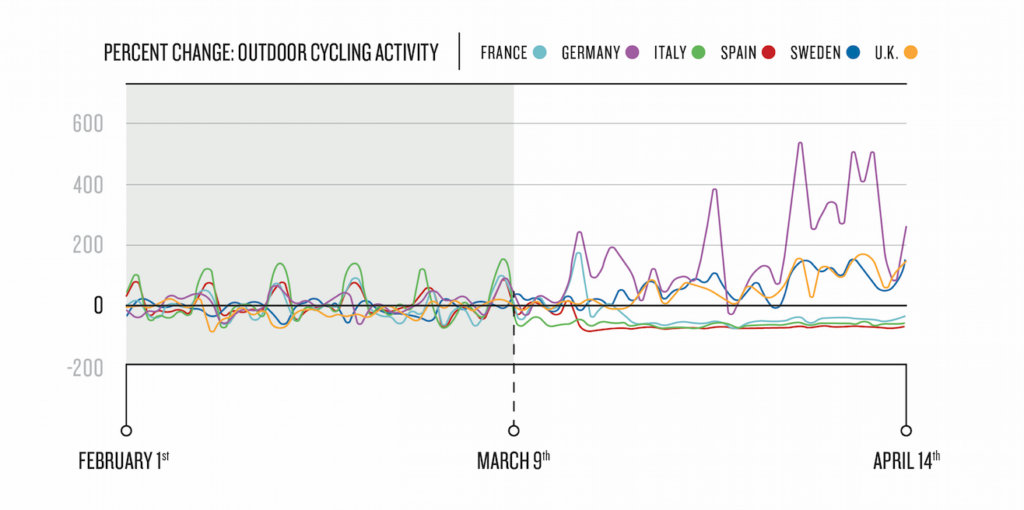The Global Pandemic and Active Lifestyles: Part II

April 24, 2020
Seismic shifts in human
activity are happening around the world. During this pandemic crisis, we at
Garmin consider it our duty to continue bringing this information to the public.
Two weeks ago, we published early activity tracking trends in the United States and saw remarkable changes in the types of sports and
exercises in which people were choosing to engage. In this edition, we take a
look at what’s happening in Europe. Specifically, the
top five EU countries by confirmed coronavirus cases: Italy, Spain, France, Germany and the U.K. To gauge
the scale of atypicality, we’ve also included Sweden in our data pull, where significantly
fewer restrictions are in place and the physical distancing enforcements are
more minimal.
As we look at the data from
millions of Garmin smartwatch wearers, it’s important we advocate our own
approach and methodology. We believe that reporting only on aggregate step
count does not tell the complete story. While this number is down in every country,
we caution against using this data set alone to suggest that people are moving
less. Here’s why:
Take, for example, a woman
who’s quarantined in a 120-square-meter apartment in Italy. While she may be
logging a very low daily step count due to the physical confinement, she could
also be cycling in place on a virtual trainer for 20 kilometers a day. Has her activity
level decreased because of the pandemic? No. She’s actually moving more. She’s
just changed her routine because of circumstance.
Accuracy, perspective and the
ability to dive deeper into the data are critical to painting a true picture of
what’s happening in our world. Garmin wearable devices have more than 20
different built-in sports and activity apps. This vast feature set combined
with an expansive global user base doesn’t just tell us if people are
moving. It tells us how they are moving.
Now let’s look at the data.
Each activity trend
visualization shows six European countries, selected for the aforementioned
reasons. National lockdowns began taking effect on March 9 in Italy, with the other countries implementing restrictions in the following
days. For a consistent and clear picture, we’ve used March 9 as a midpoint
and compared the five weeks prior and five weeks after to determine percentage
increases and decreases. Although not visualized, 2019 trends over the same
time period were crosschecked to ensure seasonal trends were differentiated
from those driven by COVID-19 related events.
Cycling
Let’s start with indoor cycling. Our hypothetical scenario presented above appears to be the surprising reality in France, Italy and Spain, where historically strict stay-at-home guidelines are in place. When comparing the pre- and post-lockdown phases in France, we’re seeing a remarkable 157% increase in the activity. Spain and Italy are reporting record indoor cycling highs as well, with 273% and 309% increases, respectively. Again, the magnitude of this shift cannot be understated – we are witnessing historically steep increases in an activity that typically decreases in the spring. It’s never happened before.

Worth noting: A large portion
of indoor cyclists are virtual riding with smart trainers such as those made by
Tacx. This means they’re syncing their activity with a
third-party platform such as Zwift, which allows users
and their connections to ride together virtually throughout the world. So when
you hear platitudes like “staying apart brings us together,” you can rest
assured that for cyclists, it really is true.
Additionally, as more people log indoor cycling activities, we’re seeing the average distance per ride increase, which could indicate a newfound motivation to “beat” the impositions of the pandemic. Spain is seeing an incredible 41% average distance per ride increase. Meanwhile, Germans, despite having a slight decline in the overall activity trend, are still going on longer rides with a 12% average distance per ride increase. The March 1 spike in Sweden correlates with the Vasaloppet ski race – our hypothesis here is that many people were indoor cycling instead, as a proxy for participating in the race.

When we look at outdoor cycling in Germany, U.K. and Sweden, the trendline indicates a clear movement outside. In Germany alone, we’re seeing a 153% increase in outdoor cycling. During the same time period in 2019, Germany only saw a 36% increase. It’s entirely within the realm of possibility that psychological factors, such as a desire to be more active in the face of adversity, could be at play here. Additionally, this trendline also points out how well stay-at-home orders are being followed in France, Italy and Spain.

General Fitness Workouts
But what about the masses?
After all, not everyone is a cyclist. For this perspective, we turn to fitness
equipment activity data. This includes activities uploaded using any of the
following built-in profiles on a Garmin device:…
